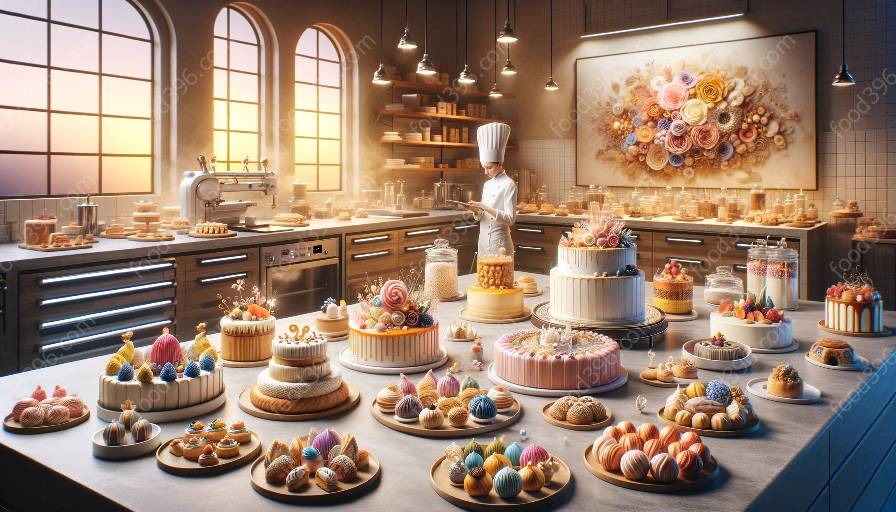Pastry doughs are the foundation of countless delectable pastries, and understanding the different types and techniques is essential to mastering the art of pastry making. In this comprehensive guide, we will delve into the world of pastry doughs, exploring their role in pastry arts, decorative techniques, and the science and technology behind successful baking.
The Fundamentals of Pastry Doughs
Pastry dough is a versatile and essential component of pastry making, with the ability to transform simple ingredients into an array of delectable treats. The fundamental principles of pastry doughs lie in their composition, texture, and technique, each playing a crucial role in the creation of exquisite pastries.
The Types of Pastry Doughs
There are several types of pastry doughs, each with its unique characteristics and applications:
- Shortcrust Pastry: Known for its buttery and crumbly texture, shortcrust pastry is widely used in tarts, quiches, and pies.
- Puff Pastry: Puff pastry is characterized by its many layers achieved through a labor-intensive process of folding and rolling, resulting in a delicate and flaky texture.
- Choux Pastry: This light and airy dough is used to create airy pastries such as éclairs, profiteroles, and beignets.
- Filo Pastry: Filo pastry, also known as phyllo pastry, is paper-thin and delicate, commonly used in Mediterranean and Middle Eastern pastries such as baklava and spanakopita.
Decorative Techniques with Pastry Doughs
Pastry doughs serve as a canvas for creative and intricate decorative techniques, elevating pastries from delectable treats to works of art. Decorative techniques include:
- Lattice Work: Commonly used in pies, lattice work involves weaving strips of pastry dough to create decorative toppings.
- Piping and Piping Bags: Pastry doughs can be piped into various shapes and designs using piping bags, adding ornate details to pastries.
- Embossing and Stamping: Patterns and designs can be embossed or stamped onto pastry dough before baking, adding visual appeal to the finished pastries.
- Blind Baking: Pre-baking the pastry crust before adding the filling, preventing sogginess and ensuring a crisp base.
- Steam Injection: Utilizing steam in the baking process creates a moist environment, resulting in flaky, well-risen pastry dough.
Baking Science and Technology
Understanding the science and technology behind pastry doughs is essential for achieving consistent and successful results in baking. Factors such as gluten development, temperature control, and ingredient ratios all play a critical role in the creation of perfect pastry doughs.
Baking Techniques
To achieve the desired texture and appearance of pastries, various baking techniques are employed, including:
The Art of Pastry Making
Pastry making is a harmonious blend of creativity, precision, and technical know-how. Mastering pastry doughs not only opens the door to a world of delectable pastries but also allows for the expression of artistic flair through decorative techniques.
By understanding the science and technology underpinning baking, pastry artists can achieve consistent and high-quality results, bringing their creative visions to life with each delectable pastry creation. Now armed with a comprehensive understanding of pastry doughs, decorative techniques, and baking science, you are ready to embark on a journey of pastry artistry, creating delectable treats that delight the senses.


